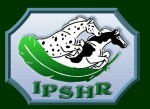|
|
 |
||
| Genetic Information Vital to Horse Health and Sound Breeding will be listed here | |||
|
|
Prevention Begins with Knowledge New information on Night Blindness
New research by
Dr. Lynne Sandmeyer, DVM, DVSc, Click Here to read more about this study. The link is on the bottom of the main link bar.
It is the
Goal of IPSHR to provide knowledge and Education to breeders about Mutant
Genetic Defects. These awful diseases can be eradicated, but breeders must
be willing to cull individuals with these undesirable genetic defects.
Hyperkalemic Periodic Paralysis (HYPP) is an inherited disease that leads to uncontrolled muscle twitching, profound muscle weakness, paralysis, and in severe cases, may lead to collapse and/or death. Possible genotype combinations of HYPP are
At this time, we know that HYPP traces back to the AQHA stallion IMPRESSIVE. A test for this disease is here and is readily available through licensed laboratories. No foal needs to be affected with this awful disease anymore. Selectively breeding N/N horses can eliminate HYPP from the breeding pool. For instructions on HYPP testing and forms for submission please refer to their web site at www.vgl.ucdavis.edu Read more about HYPP here.
Hyperelastosis Cutis (HC), also referred to as Hereditary Equine Regional Dermal Asthenia, (HERDA) is a genetic disease in which abnormal skin along the back tears easily and heals with disfiguring scars. Most commonly affected horses are quarter horses, specifically cutting horses. But we also know of registered paints and appaloosas with quarter horse lineage which have been afflicted with this disease, and the disease has also been reported in other breeds: a cross-bred Arabian mare, a Thoroughbred gelding, a Hanoverian foal and a Haflinger horse.
This condition is almost certainly present at birth, but is often not noticed until around 2 years of age when the horse begins under saddle training. The friction of the tack along the skin literally tears the skin apart, causing the typical lesions associated with the condition. As with many genetic diseases, there is no effective treatment or cure, although in some cases it is possible for the horse to be maintained as a "pasture pet." HERDA traces back primarily down through the AQHA stallion Poco Bueno and his immediate ancestors -- King, Zantanon, and Little Joe.
There recently was a test developed CORNELL UNIVERSITY to definitively distinguish carriers. The genes that cause HERDA are recessive, meaning that both sire and dam must possess the recessive gene in order for an offspring to possibly be afflicted with HERDA. If a mating of stallion and dam produces a HERDA foal, then it is certain that both animals are carriers and should not be bred to each other again in order to avoid a similar outcome. Read more about HERDA here. See HERDA images here.
Glycogen Branching Enzyme Deficiency (GBED) is a condition that is caused when a gene mutation causes the horse's cells to become unable to store sugar as glycogen in the body. GBED is a recessive condition -- in order for a foal to be affected, it must receive a mutant gene from each parent. Breeding a carrier stallion to a carrier mare will produce a symptomatic foal 25% of the time and carrier foals 50% of the time. Researchers recently released the connection of GBED to the stallion Zantanon through his son King. Approximately 8% of King's offspring are believed to be carriers of the disease.
The University Of Minnesota College Of Veterinary Medicine has a patent pending on a GBED genetic test to determine if a horse carriers the gene mutation. Meanwhile, the University of California, Davis, Veterinary Genetics Laboratory is licensed to perform GBED testing. It is recommended that horses be tested if they have previously lost foals to abortion or neonatal death for unknown reasons. If your foal is stillborn or dies from unexplained causes, have your veterinarian send a blood or muscle sample to Dr. Stephanie Valberg at the University of Minnesota. Call (612) 625-6700 to obtain a form to turn in with the blood or tissue sample. For instructions on GBED testing and forms for submission please refer to their web site at www.vgl.ucdavis.edu.
Read more about GBED here.
Junctional Epidermolysis Bullosa (JEB) is an inherited disease that causes moderate to severe blistering of the skin and mouth epithelia, and sloughing of hooves in newborn foals. This condition is also known as red foot disease. Affected foals are typically born alive, but soon develop skin lesions at pressure points. The condition worsens with time and the foal eventually succumbs from severe infection or has to be euthanized. To date, this mutation has been found only in Belgian Draft horses and derivatives of that breed. JEB is inherited as a recessive trait. Animals that carry two copies of the mutated gene (homozygous recessive) will develop the disease. Animals that carry one copy of the mutated gene and one copy of the normal gene (heterozygous) are carriers of JEB. Carriers do not develop the disease and have normal epithelium, but they have a 50% chance of passing on the mutation to their offspring. If we use N to represent the normal gene and J the mutated gene, an affected animal is designated J/J, a carrier animal is N/J and a normal animal is N/N.
|
||
